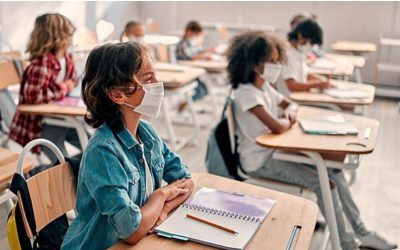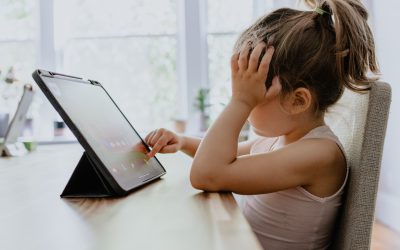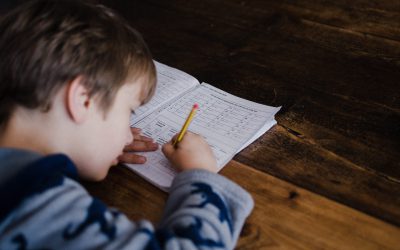Models and decision criteria for reopening of schools
29 May 2020 | Professionals
Now that countries are reopening schools there are various models being implemented across countries:
- Part-time for all grades supported by blended learning
- Only final years or transition grades (Germany, Austria)
- Prioritizing primary or secondary schools (full time for primary and thereafter part time for secondary(Norway and Denmark)
- Prioritizing vulnerable students (Israel or UK).
Prof. Dr. Melanie Ehren
& Rukiye Turkeli
29-05-2020


Which model is chosen depends on countries’ priorities for student learning and outcomes and their expectations around children’s abilities for social distancing? Some countries prioritize opening schools for younger children when expecting teenagers to be better able of working independently, allowing parents of young children to get back to work. Other countries (China) prioritize older age groups when expecting these to be better able to adhere to social distancing guidelines. Some school systems consider reopening for younger children when these are unable to access or engage in online teaching and learning, or when they depend on school meals. It is important to make decisions from a health point of view as well as from an equity point of view. 1
Decision criteria for reopening
UNESCO`s report:
An UNESCO report summarizes the criteria for progressive opening of schools:
- Age (prioritizing younger children, who are less likely to benefit from distance learning (e.g. Denmark);
- Learning priority, for example for graduating students who need certification on depending on high-stake exams for transitioning to higher levels of education (e.g. China); or
- Locality, starting in low-risk areas (e.g. Vietnam).
UNESCO recommends preparing multiple and flexible scenarios for gradual reopening. Each country may make different plans for school reopening based on the actual situation, their needs and priorities. No linear approach is encouraged and gradual reopening seems to be the safest approach, as it can provide countries the opportunity to assess and control the situation before general reopening. Certain countries may opt for partial reopening (see for example Madagascar), differential reopening (different grades on different days), progressive reopening (see for example Mexico) or to remain closed until further notice (see for example Italy).
Given the unpredictable nature of the pandemic, reclosure should be an option when the risk for a new potential outbreak increases. Countries which initially had fixed dates for school reopening had to postpone their decision in view of the evolving situation (see for example Japan).
Country cases
Denmark was the first European country to restart school after closure, allowing municipalities to reopen schools as early as April 15. In the first phase of reopening, only children under age 12 returned to school, while older children continued distance learning at home. Younger children came back to school first because they were viewed as facing lower health risks, benefiting less from distance learning, and needing greater supervision from working families (Source)
Taiwan has been recognized to have effectively minimized spread of COVID-19 with national policies that avoided widespread planned school closures, applying the same strategy it used during the 2009 H1N1 influenza pandemic. Instead of a national shutdown, Taiwan mandated temporary, local class or school closures based on local infection rates in conjunction with in-school health and safety measures (Source)
France started a phased return on 11 May with primary schools and nurseries. Secondary school pupils between the ages of 11 and 15 living in “green zones” – areas where the infection rate is lower – will begin to return from 18 May. However, pupils over the age of 15 will not return to school until after June (Source)
In Germany, education is managed under a decentralized system in which the government of each federal state is responsible for its own schools. This means that, although there are national guidelines for reopening, the timetables, and nuances of doing so vary by region.
For example, in Hamburg schools are – according to Niko Gärtner who is a headteacher- following a three-step plan for reopening (see here):
1) Exam groups returned to school preparing for and sitting their MSA (GSCE) and Abitur (A level) exams.
2) Year groups scheduled for leaving exams next year and those who change schools in summer (those in their last year of primary schooling).
3) The remaining students will return on 25 May, but for only one full day each week.
This will allow teachers to enforce social distancing by splitting classes into smaller teaching groups and limiting the number of people in any part of the school at once.
On the days that pupils are not in school, they will continue to learn from home remotely, as they have done throughout the lockdown.
Schools in New Zealand are due to reopen on 18 May, however, the Ministry of Education announced that schools “can start a transition period from Thursday 14 May”, which allows schools to bring different year groups back gradually and gives schools the option of providing a “transition arrangement” for those children whose parents have safety concerns about their child going back to school (Source)
[1] The text is an interpretation of the authors’ attendance of the McKinsey webinar on May 19, 2020 with further detail from a news search.
Bekijk ook informatie voor:
Meest recente blogs:
How LEARN! supports primary and secondary schools in mapping social-emotional functioning and well-being for the school scan of the National Education Program
Jun 28, 2021
Extra support, catch-up programmes, learning delays, these have now become common terms in...
Conference ‘Increasing educational opportunities in the wake of Covid-19’
Jun 21, 2021
Covid-19 has an enormous impact on education. This has led to an increased interest in how recent...
Educational opportunities in the wake of COVID-19: webinars now available on Youtube
Jun 17, 2021
On the 9th of June LEARN! and Educationlab organized an online conference about...
Homeschooling during the COVID-19 pandemic: Parental experiences, risk and resilience
Apr 1, 2021
Lockdown measures and school closures due to the COVID-19 pandemic meant that families with...
Catch-up and support programmes in primary and secondary education
Mar 1, 2021
The Ministry of Education, Culture and Science (OCW) provides funding in three application rounds...
Home education with adaptive practice software: gains instead of losses?
Jan 26, 2021
As schools all over Europe remain shuttered for the second time this winter because of the Covid...





